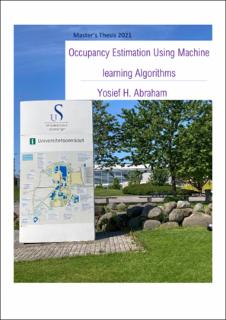| dc.description.abstract | Building occupancy recently has drawn the attention of many researchers. With the advance of new technologies in AI and IoT, it has become possible to further optimize building energy consumption without compromising comfort of the occupants. In this thesis project, occupancy is estimated by training models on data collected from the building called Arkivenshus in Stavanger. The data collected includes measurements of electricity consumption, ventilation, hot and cold-water consumption and PIR sensors (Passive infra-red sensors). The models that are trained are classification algorithms such as KNN, decision tree, random forest, and support vector machine. Data from the building is collected over two months period where data points are collected every 15min.
Occupancy detection solutions that employ cameras, WIFI activities etc can be used to detect occupancy in buildings, however these solutions can be intrusive, costly and computationally expensive. Moreover, PIR sensors which are used for activation of lighting systems detect occupancy, they however cannot be directly related to the count of number of people. To estimate the number of people inside building I have labelled the data in five categories, where 1 represents counts less than 5, 2 represents between 5 and 25,3 represents between 25 and 50, 4 represents between 50 and 75 and for counts greater than 75 they are represented by class 5. Due to the pandemic I was not able to register number of people inside the building more than 80, which presumably has an impact on the efficiency of my model.
The performance of the models are compared using various metrices, Since the data is nor balanced and I have divided the target into five classes, looking only the accuracy of a model is a bit misleading in selecting the best model. Considering accuracy, confusion matrix and learning curves of each model the best performing model is found to be SVM (Support vector machine). | |
